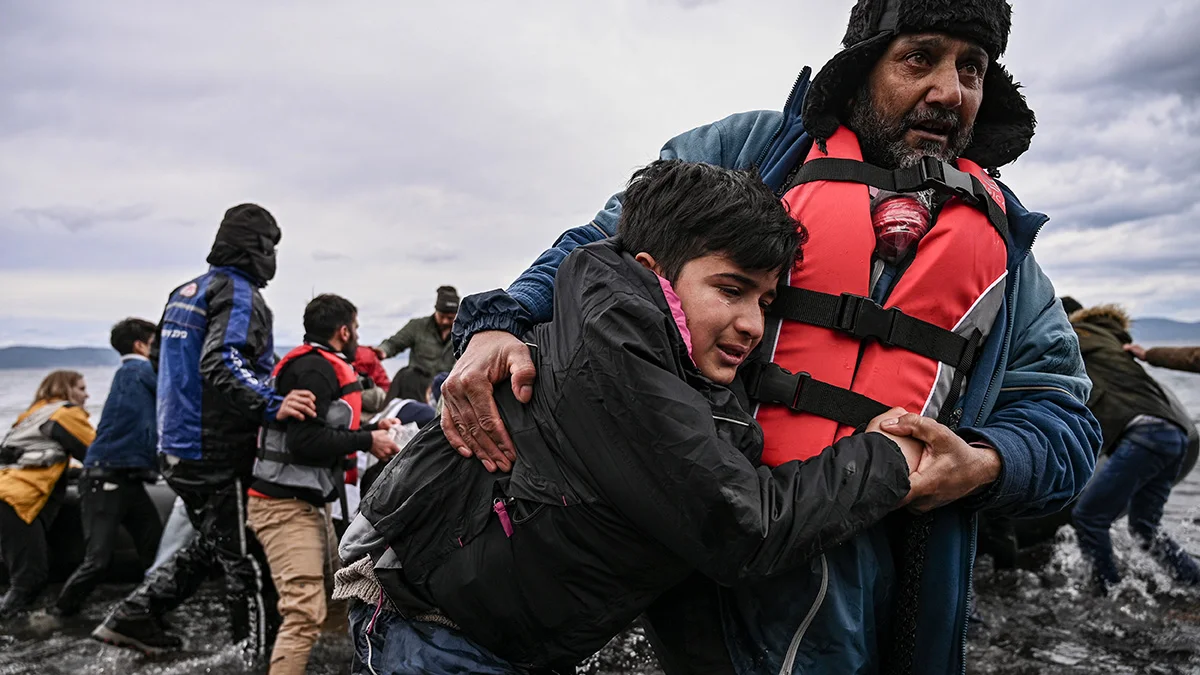So far in 2023, an estimated 11,600 children made the dangerous crossing. The majority were alone or separated from their parents.
At least 289 children are estimated to have died or disappeared this year attempting to cross the perilous Central Mediterranean Sea migration route from North Africa to Europe, according to UNICEF. This equates to nearly eleven children dying or disappearing every week as they search for safety, peace and better opportunities.
Since 2018, UNICEF estimates around 1,500 children have died or gone missing while attempting the Central Mediterranean Sea crossing. This number accounts for 1 in 5 of the 8,274 people who have died or gone missing on the route, according to IOM’s Missing Migrant Project records.
Many shipwrecks on the Central Mediterranean Sea crossing leave no survivors or go unrecorded, making the true number of child casualties practically impossible to verify and likely much higher. In recent months, children and babies have been among those who have lost their lives on this route, on other routes across the Mediterranean and on the Atlantic route from West Africa, including the recent tragedies off the coasts of Greece and Spain’s Canary Islands.
“In attempts to find safety, reunite with family, and seek more hopeful futures too many children are boarding boats on the shores of the Mediterranean, only to lose their lives or go missing on the way,” said UNICEF Executive Director Catherine Russell. “This is a clear sign that more must be done to create safe and legal pathways for children to access asylum, while strengthening efforts to rescue lives at sea. Ultimately, much more must be done to address the root causes that make children risk their lives in the first place.”
UNICEF estimates 11,600 children – an average of 428 children a week – arrived on the shores of Italy from North Africa since January 2023. This is a two-fold increase compared to the same period in 2022, despite the grave risks involved for children. The majority of children depart from Libya and Tunisia, having already made dangerous journeys from countries across Africa and the Middle East.
In the first three months of 2023, 3,300 children – 71 percent of all children arriving to Europe via this route - were recorded as unaccompanied or separated from parents or legal guardians, putting them at a greater risk of violence, exploitation and abuse. Girls travelling alone are especially likely to experience violence before, during and after their journeys.
The Central Mediterranean Sea has become one of the most dangerous routes travelled by children. However, the risk of death at sea is just one of many tragedies these children face – from threats or experiences of violence, lack of educational or future opportunities, raids and immigration detention or separation from family. These risks are further compounded by limited pathways for children to move safely, lack of access to protection in countries along the way, and insufficient and slow search and rescue operations.
In line with obligations under international law and the Convention on the Rights of the Child, UNICEF is calling on governments to better protect vulnerable children at sea and in countries of origin, transit and destination by:
- Protecting the rights and best interests of children in line with obligations under national and international law
- Providing safe and legal pathways for children to migrate and seek asylum, including expanded family reunification and refugee resettlement quota
- Strengthening coordination on search and rescue operations and ensuring prompt disembarkation to places of safety
- Strengthening national child protection systems to better include and protect children at risk of exploitation and violence, particularly unaccompanied children
- Improving prospects for children and adolescents in countries of origin and transit by addressing conflict and climate risks and expanding social protection coverage and opportunities to learn and earn
- Ensuring children have access to information to make safe and informed choices on their options and the dangers of crossing
- Keeping all refugee and migrant children learning and give them access to health and other essential services
UNICEF is also calling on the European Union to ensure the above are reflected in the EU Pact on Migration and Asylum, which is under negotiation.
UNICEF continues its work to support countries in strengthening national child protection, social protection and migration and asylum systems to prevent and mitigate risks children face as they move and provide support and inclusive services to all children, regardless of their or their parents’ legal status.
Notes to editors:
- The data analysis referenced in this press release was produced by UNICEF using data on arrivals in Italy from UNHCR’s Operational Data Portal (as of 9 July 2023) and data on missing migrants on the Central Mediterranean Route from IOM’s Missing Migrants Project (as of 3 July 2023), accessed 10 July 2023
- UNHCR reported 90,605 sea arrivals in Europe between January and 9 July 2023 via the Mediterranean Sea
- Most of these arrivals, 69,599 or 77%, occurred through the Central Mediterranean Route. The Central Mediterranean Route (which refers to the sea journey from North Africa, mainly Tunisia and Libya, to Italy) is one of the most active and dangerous
- For the 69,599 refugees and migrants that made the journey over the Central Mediterranean Route since January 2023, UNHCR reported a share of 16.7 per cent children - or around 11,600 children.
- Numbers of missing children are estimated based on the total number of missing migrants and the demographics of arrivals on the same route
- UNICEF is the Chair of the Secretariat of the International Data Alliance for Children on the Move (IDAC), leading global efforts to improve the availability and quality of data to improve outcomes for children on the move. Learn more here.

